The article “Persian Influence on Greek Thought” by Jacques Duchesne-Guillemin was originally posted on the Encyclopedia Iranica on December 15, 2002 and last updated on February 23, 2012. This article is also available in print (Vol. XI, Fasc. 3, pp. 319-321). Kindly note that the images and accompanying captions inserted below do not appear in the original version by the Encyclopedia Iranica.
As this posting has arrived prior to Nowruz March 21, 2019, the article “Happy Nowruz! نوروز خجسته باد” by Dr Mohammad Ala is being shared as well. Dr Mohammad Ala is the winner of Cinema Vérité Award on December 16, 2018, The Panda Award in October 19, 2018, and The Grand Prix Film Italia Award in June 19-23, 2013.
==================================================================================
The idea of oriental, and especially Iranian, origins of Greek philosophy was endowed by antiquity with a legendary aura, either by declaring that Pythagoras had been Zoroaster’s pupil in Babylon (a city where neither of them had probably ever been), or by writing, as did Clement of Alexandria (Clement of Alexandria, 5.9.4), that Heraclitus had drawn on “the barbarian philosophy,” an expression by which, in view of the proximity of Ephesus to the Persian empire, he must have meant primarily the Iranian doctrines.
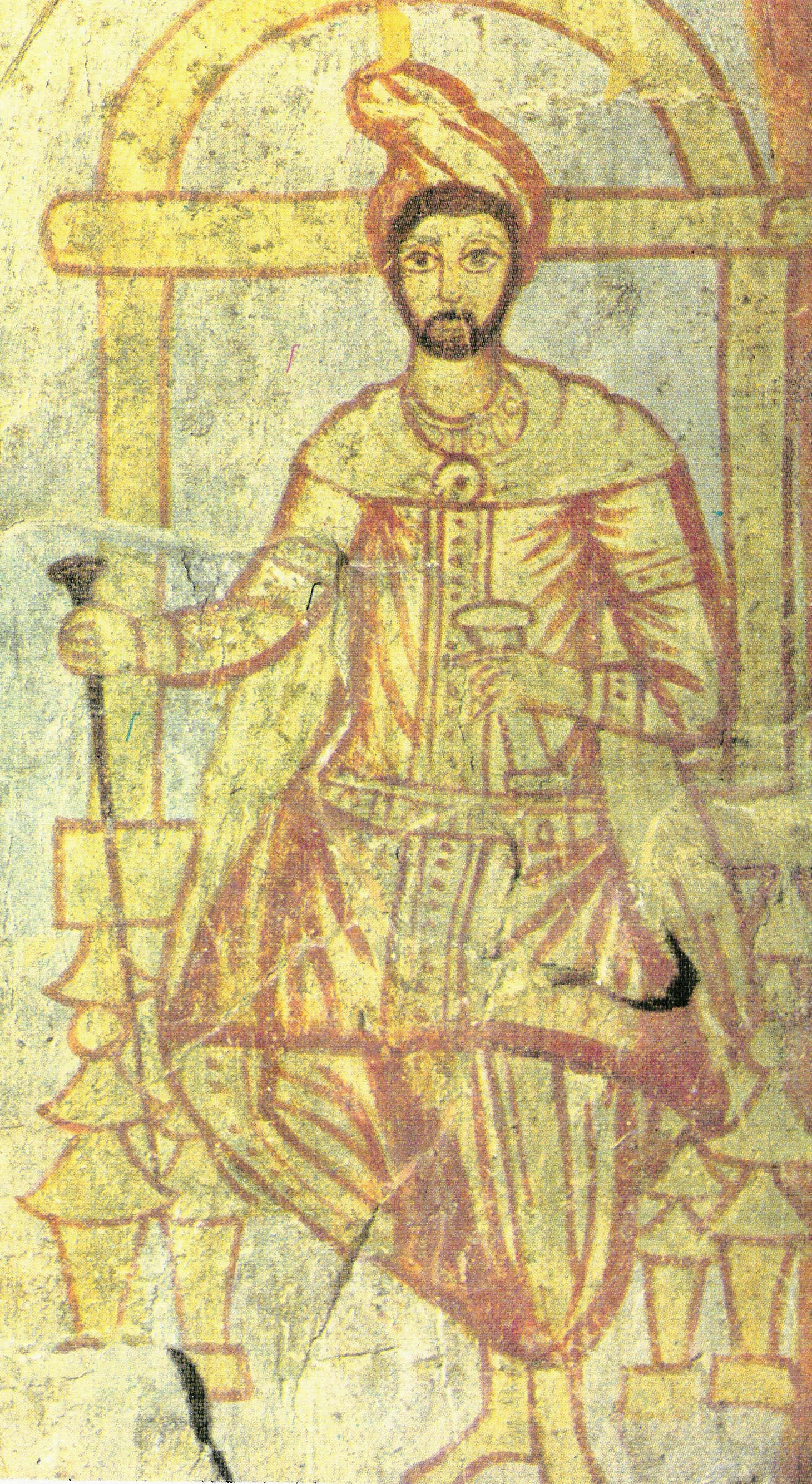
A drawing of Zoroaster that was made by a Manichean initiate at Dura Europus (Source: Clioamuse); for more on the creed of Mani, see here…
The problem, studied seriously since the beginning of the 19th century, has often been negatively solved by the great historians of Greek philosophy; but it seems, nevertheless, repeatedly to rise anew like the Phoenix from its ashes, as though the temptation to compare the two traditions and discover a bond of interdependence between them periodically became irresistible.
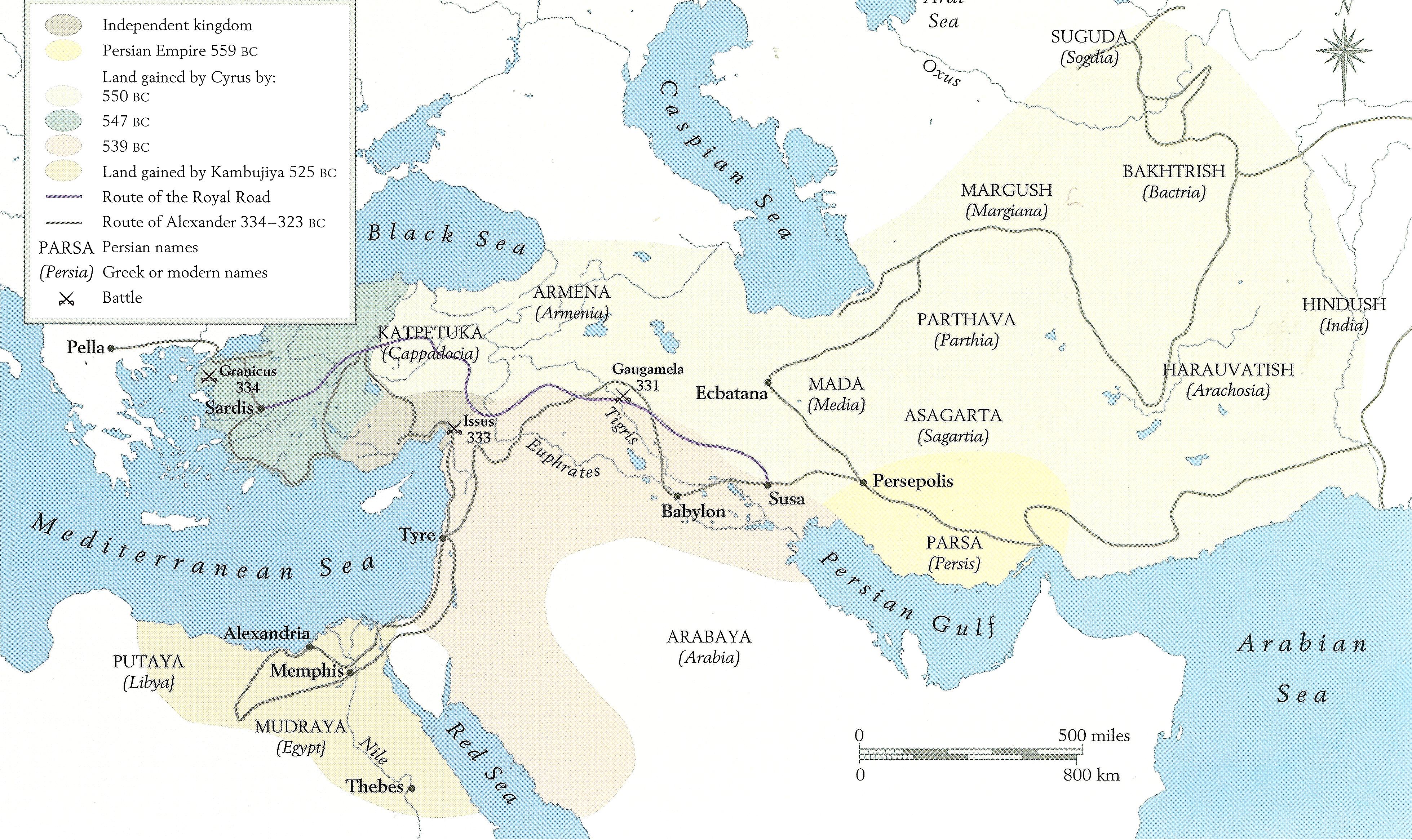
Map of the Achaemenid Empire drafted by Kaveh Farrokh on page 87 (2007) for the book Shadows in the Desert: Ancient Persia at War-Персы: Армия великих царей-سایههای صحرا-. The empire’s vast network of roads and communications facilitated economic contacts between different geographical regions. These same networks appear to have also facilitated the exchange of ideas between the Hellenic and Iranian worlds.
Pherecydes of Syros was one of the first Greek prose writers and may be considered, as the author of a theogony-cosmogony, to have been a precursor of the Ionian philosophers. He told of the marriage of Zās and Chthoniē. Zās, genitive Zantos, is a conflation of Zeus with the Luvian god Šanta, which points to a region in western Asia Minor from which Pherecydes’ father Babys or Babis originated (West, p. 243). A third god in Pherecydes’s narrative was said to have produced from his own seed, fire, wind, and water; he is called in some sources Kronos, in others Chronos. Both gods were later identified, but we do not know which of the two Pherecydes meant. If he meant Chronos, the question arises of a borrowing from Iran. Zurvan, mentioned as a minor deity in the Avesta (see Zaehner, p. 57; Gray, Foundations, p. 124), was ignored by Zarathushtra, perhaps on purpose, as Mithra was also omitted. Anyhow, Zurvan is attested in Elamite tablets (509-494 B.C.E.) in the name Izrutukma (i.e., *Zru
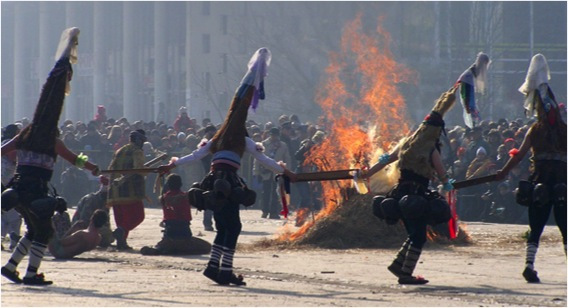
The celebration of “Surva” in modern-day Bulgaria. Local lore traces this festival to the Iranian God Zurvan. This folklore system appears to be linked to the Bogomil movement. Interestingly, much of the Surva theology bears parallels with elements of Zurvanism and Zoroastrianism (Picture Source: Surva.org).
Anaximander, according to Hippolytus’ evidence (Refutatio omnium haeresium1.6), taught that the spheres of the heavenly bodies followed one another in this order, starting from the earth: the stars, the moon, and the sun. The Avesta (Hādoxt nask 2.15; Yt. 12.9 ff.) teaches that the souls of the dead reach paradise through three intermediate stages: humata (good thoughts), huxta (good words), and huuaršta (good deeds). Now, according to the Pahlavi books (e.g., Mēnōg ī xrad57.13), each of these stages is respectively identified with the place of the stars, the moon, and the sun.
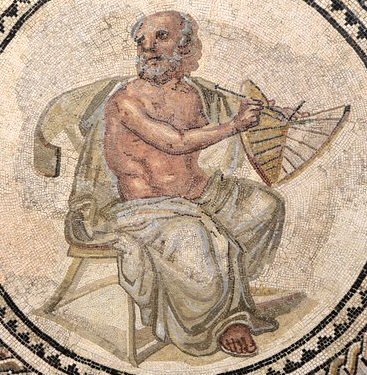
Anaximander (c.610-c.546 BCE) wielding a sundial, as represented by a 3rd century CE Roman mosaic in Germany, city of Trier at Johannisstraße (Johannis street) (Source: Public Domain & NYU Exhibitions).
It is obvious that the stars, the moon, and the sun follow each other in the order of increasing light, and this progression is completed in a fourth and final stage, which is the destination point of the soul’s journey; one of the Pahlavi names of Paradise is, in fact, anaγrān “beginningless (lights)” (Frahang ī pahlavīk 28). To each stage there corresponds a category of living beings: to the stars, the plants; to the moon, the animals; to the sun, man; to the beginningless lights, the gods or God. The hierarchy between these beings is obvious. So we can explain, through Iran and by means of an organic body of beliefs, Anaximander’s doctrine on the spheres of the stars, the moon, and the sun (see also Panaino, pp. 205-26).
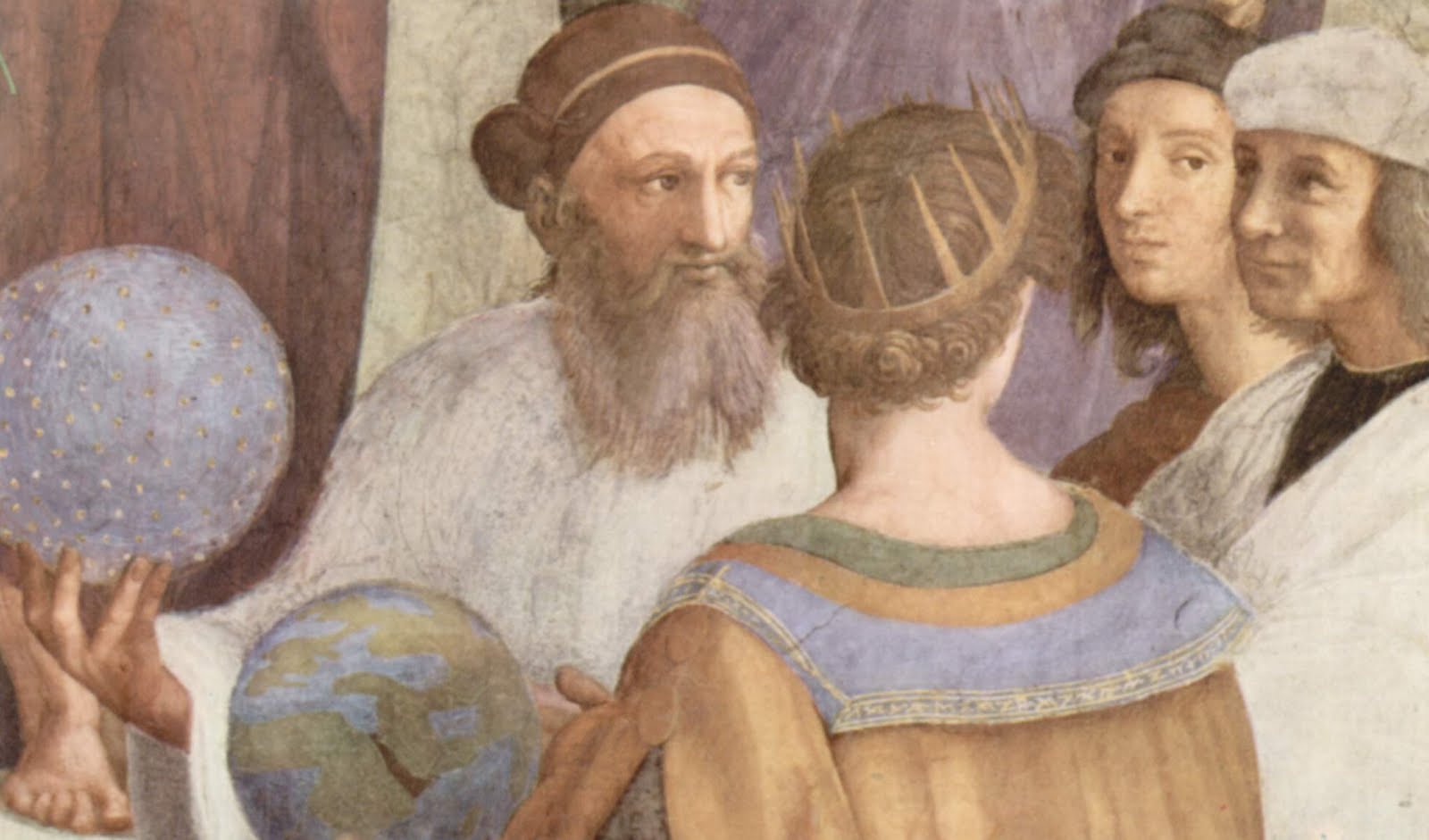
A detail of the painting “School of Athens” by Raphael 1509 CE (Source: Zoroastrian Astrology Blogspot). Raphael has provided his artistic impression of Zoroaster (with beard-holding a celestial sphere) conversing with Ptolemy (c. 90-168 CE) (with his back to viewer) and holding a sphere of the earth. Note that contrary to Samuel Huntington’s “Clash of Civilizations” paradigm, the “East” represented by Zoroaster, is in dialogue with the “West”, represented by Ptolemy. Prior to the rise of Eurocentricism in the 19th century (especially after the 1850s), ancient Persia was viewed positively by the Europeans.
Everything that exists comes, according to Anaxi-menes (Diels, I, p. 22) from a single substance, aēr, which notably means wind. In Iran it is said in the Dēnkart (278.14) that “He who quickens the world and is the life of living things is Wāy, etc.” The existence of a great god Vayu, already Indo-Iranian, is warranted by similar testimonies in the Rig Veda (4.46 etc.).
Anaximenes’ explanation of eclipses as being caused by dark bodies has its counterpart in Dāmād nask, in Šāyest nē šāyest (12.5). These dark sun and dark moon are not mentioned in the Avesta, but, as writes West (p. 108), “One would not expect to find a theory of eclipses in the Avesta,” at least not in the extant, liturgical part of it.
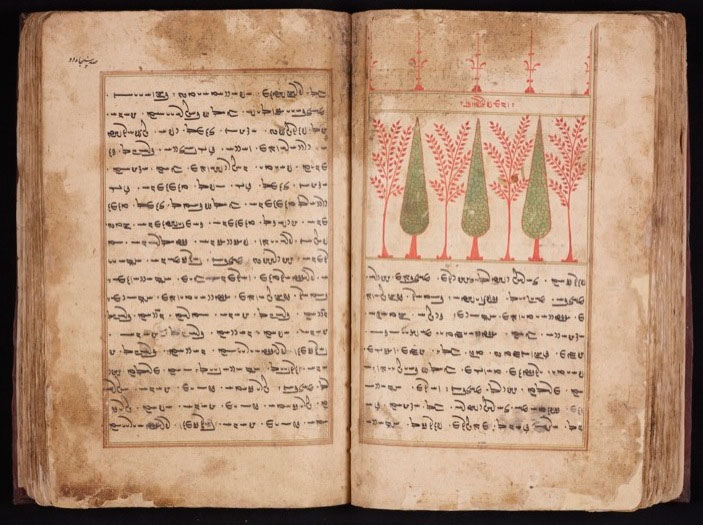
The question of an Iranian origin of Heraclitus’s doctrines was raised by Friedrich Daniel Schleiermacher, whose work as well as that of his successors Friedrich Creuzer, August Gladisch, etc., have been reviewed by Martin Lutchfield West (pp. 166 ff.). There are several fragments which expound Heraclitus’s reflections on fire. “This cosmic order, which is the same for all, was not made by any of the gods or of mankind, but was ever and is and shall be ever-living fire, kindled in measure and quenched in measure” (Fr. 29); “the transformations of fire: first sea, and of sea, half is earth, half fiery water spout” (Fr. 32); “all things are counterparts of fire, and fire of all things, as goods of gold and gold of goods” (Fr. 28). According to Heraclitus, “fire lives the death of the earth, and air lives the death of fire, water lives the death of air, and earth that of water” (Fr. 76). Another fragment names lightning: “The thunder-bolt steers all things” (Fr. 64). And another one says that fire is to judge all things at the end of the world (Fr. 72).
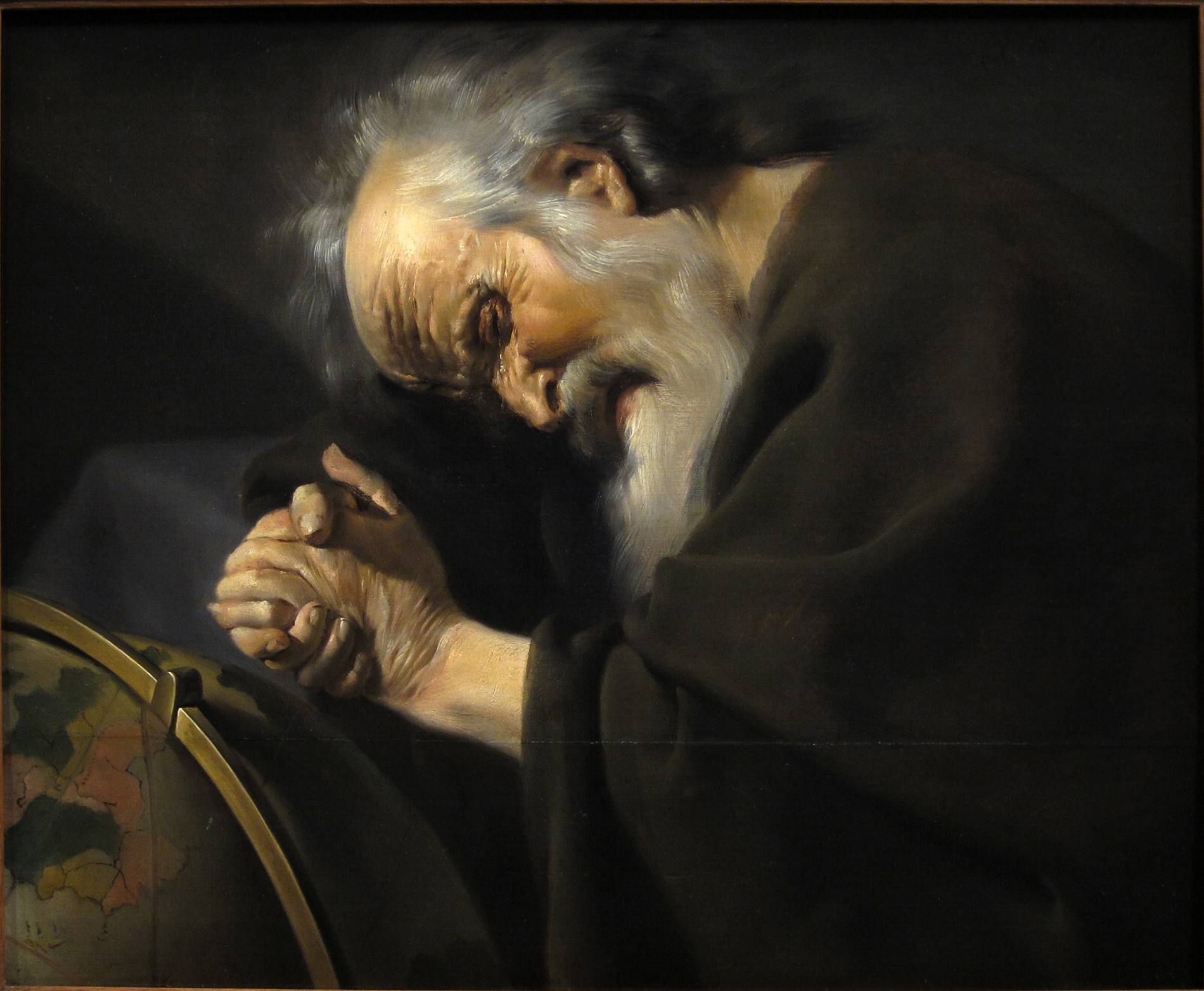
Depiction by Dutch baroque painter Johannes Moreelse (c. 1603–1634) made in 1630 of Heraclitus (c.535-c.475 CE) (Source: Public Domain).
In the Gāθās the role of fire is fundamental. Twice Zarathushtra calls upon “the fire of Ahura Mazdā,” either to make offerings to it (Y. 43.9) or to acknowledge its protection (Y. 46.7). In all the other passages, fire is an instrument of ordeal. Ordeal is found only once in the Gāθās (Y. 32.7) as an actual practice, but several times there is reference to a future ordeal which is to be made by means of fire to separate the good from the wicked. Here fire is the instrument of truth or justice (aṧa, q.v.), from which it derives its power (hence the epithet aṧa-aojah). This connection of fire with aṧa is constant, e.g, “I wish to think, insofar as I am able, of making unto thy fire (O Ahura Mazdā!) the offering of veneration for Aṧa” (Y. 43). And when each of the elements are placed under the protection of the Aməṧa Spəntas, who surround Ahura Mazdā (qq.v.), Aṧa is the patron of fire.
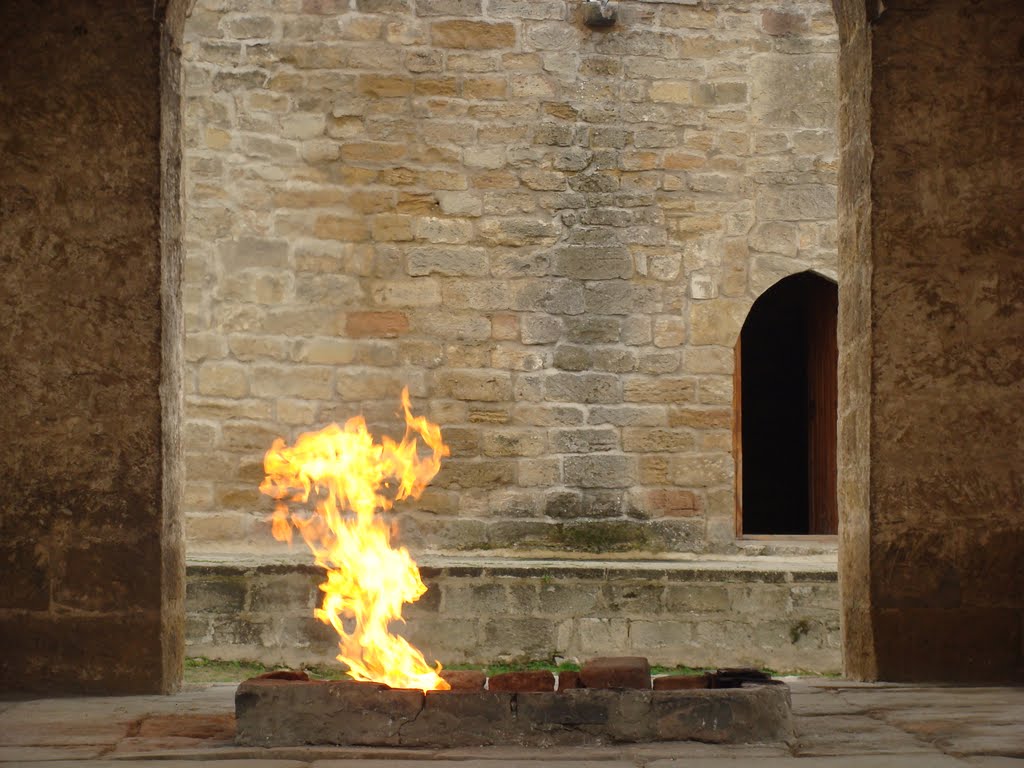
The main fire altar at the Atash-kade (Zoroastrian Fire-Temple) of Baku in the Republic of Azerbaijan (known as Arran and the Khanates until 1918) (Picture Source: Panoramio). This site is now registered with UNESCO as a world heritage site. For more on Zoroastrian and Mithraic temples in the Caucasus, see here…
There was also a doctrine of cosmic fire. Fire penetrated all the six stages of creation. Although this is not attested before Zādspram’s Wīzīdagīhā (1.25), its antiquity is proven by the appearance, both in Iran and in India, of two equivalent classifications, one in three fires, one in five.
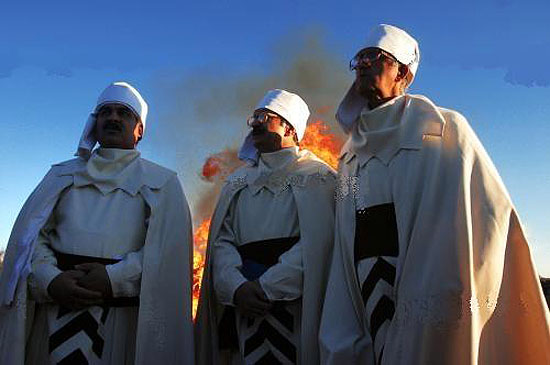
Zoroastrian magi from Kerman during the Jashne Sadeh ceremonies (Source: Heritage Institute).
Parallel to the relationship of fire with Aṧa is Heraclitus’s doctrine that fire is ruled by Dikē “Justice” (not by the Logos as is the case in the Stoic interpretation of Heraclitus). As West writes (p. 137), “the sun’s measures are maintained, through the Erinyes, by Dikē, and since the sun’s measures cannot be isolated from the measures of the world at large, it must be possible to say that Dikē governs the whole process.” Heraclitus’s god watches men the whole time, not only by day. Ahura Mazdā sees all that men do (Y. 31.13) and is not to be deceived (Y. 45.4). He is never asleep and never dulled by narcotics (Vd 19.20). “Heraclitus’ conception of the soul’s history is, from a Greek point of view, novel. It has a deep ‘account’ that increases it-self . . . According to the Pahlavi books [e.g., Mēnōg ī xrad 2.118 ff.], at death, the soul’s good and bad deeds are counted up, and determine its fate” (West, p. 184).
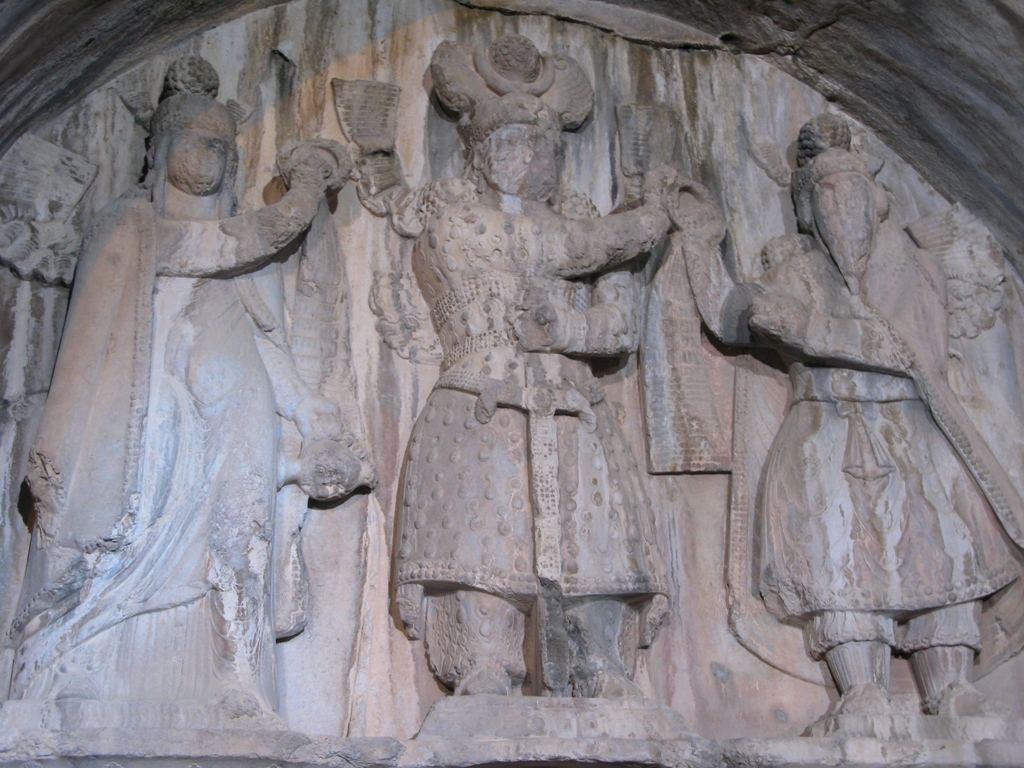
The investiture of Sassanian monarch Khosrow II (r. 590, interregnum, 591 – 628 CE) at Tagh-e-Bostan (Photo: Shahyar Mahabadi, 2004). Note the broadsword held by Khosrow II at center, flanked by Ahura-Mazda at right and Goddess Anahita to the left. The straight broad sword appears often in Sassanian arts. It is worth noting that the Qajars also carved reliefs at Tagh-e-Bostan, perhaps in an aendeavor to associate their dynasty with more ancient Iranian icons.
The fravašis (q.v.) are parallel to Heraclitus’s hero-spirits and to the immortals “that live the death of mortals.” “Heraclitus’ novel emphasis on the function of Eris or Polemos in determining the apportionment of the natural world, his conviction that opposition is the essence of the universe has long seemed to comparativists a counterpart of the Zoroastrian doctrine of agelong war between Ahura Mazdā and Aŋra Mainiiu. Heraclitus strikes a prophetic note that has reminded more than one reader of Zoroaster” (West, p. 186).

A marble representation of Greek philosopher Plato (428/427 or 424/423-348/347 BCE) housed at the Musei Capitolini (Accession number: MC1377) in Rome, Italy (Source: Marie-Lan Nguyen in Public Domain). Plato is known as one of the primary founders of Western philosophy.
Pausanias attributed to the Chaldaeans and the Magi an influence on Plato’s teachings. And Aristotle at one time considered Plato the founder of a religion of the Good and therefore a continuator of the work of the ancient prophet (Jaeger, pp. 13 ff.). In the myth of Er, the souls must choose between two paths: on the left is the way to descend from heaven to hell, on the right is the ascent of the souls who rise from the Tartarus up to the stars (Replica 614 CD). The very idea of this ascension was quite new in Greece and must have come from the Zoro-astrian belief in the primeval choice and in the Činuuatō Pərətu (see ČINWAD PUHL) separating the good from the wicked. Plato may have heard of it through Eudo-xus of Cnidus, who was well aware of the doctrines of the Magi. In the myth of the Politic, Plato envisaged the idea of an alternate predominance of a good god and an evil god, an idea he may have learned from the Magi. But he decidedly refused it. In the Timaeus time is given as the mobile image of immobile eternity, maybe a Platonic transposition of the Iranian distinction between “time long autonomous” and “time infinite” (Av. zurvan darəγō.xᵛaδāta– and zurvan akarana-; see Air Wb., cols. 46 696). The Timaeus owed much to Democritus, whose relationship with the teachings of the Magi is well attested. In the Phaedrus, Plato, with reference to Hippocrates, views man as an image of the world, a microcosm, an idea propounded in the Dāmdāt nask, a lost part of the Avesta summarized in the Bundahišn and whose antiquity is proved by the Indo-Iranian myth of a primeval man sacrificed and dismembered to form the different parts of the world (Duchesne Guillemin, 1958, pp. 72 ff.).
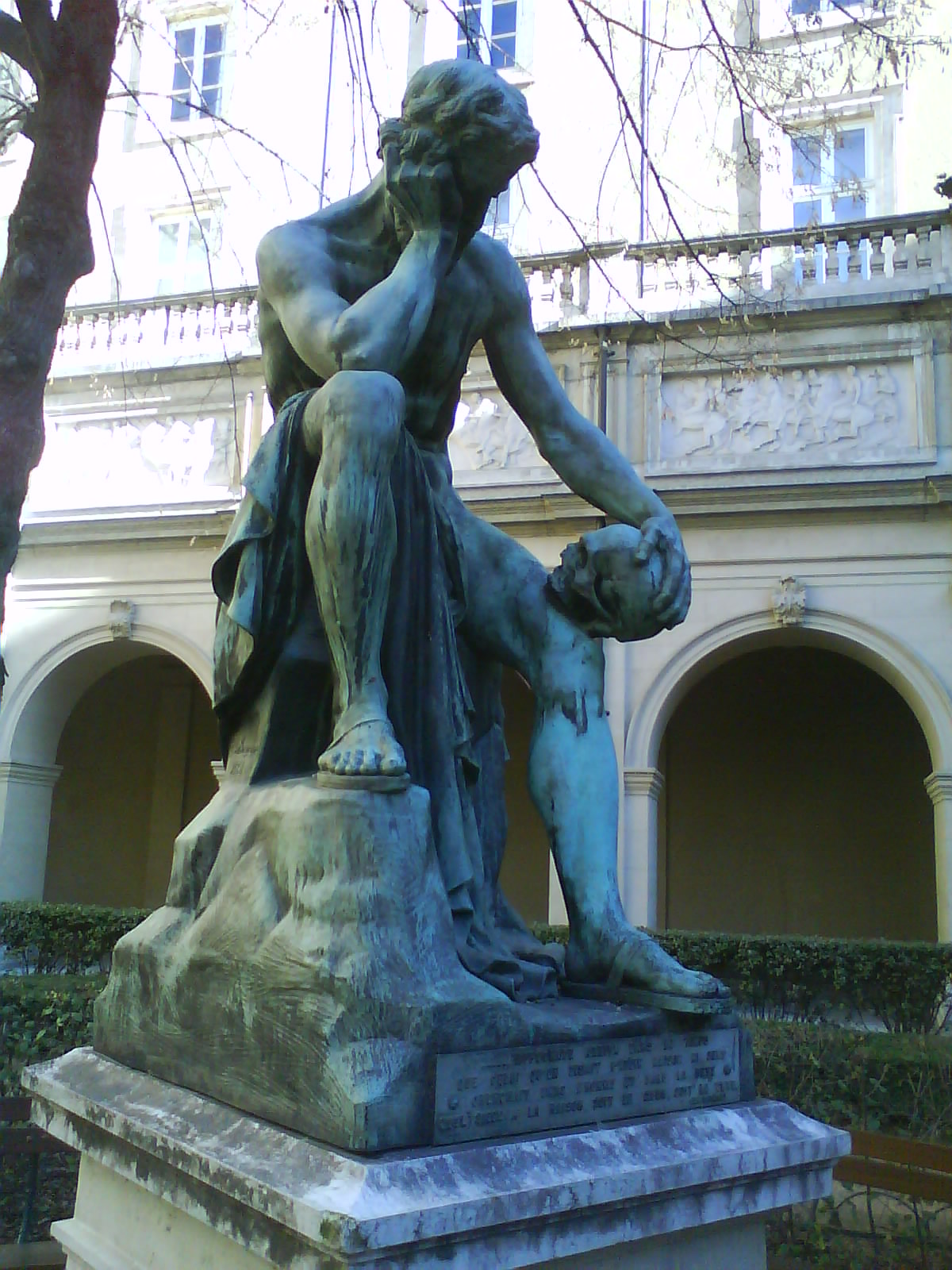
Léon-Alexandre Delhomme’s 1868 statue at the Lyon Museum of Fine Arts in France depicting Democritus (Source: Jean-Louis Lascoux in Public Domain).
Empedocles already shared the microcosm idea, which governed the conception of medicine he had inherited from the Cnidian school, influenced by Iran. He also declared that “the general law is widely extended through the ether of the vast dominion and the immense brightness of the sky,” (Fr. 38), which harks back to Heraclitus and, through him, to Zarathushtra proclaiming the coincidence of Aṧa with the light (Y. 31.7).
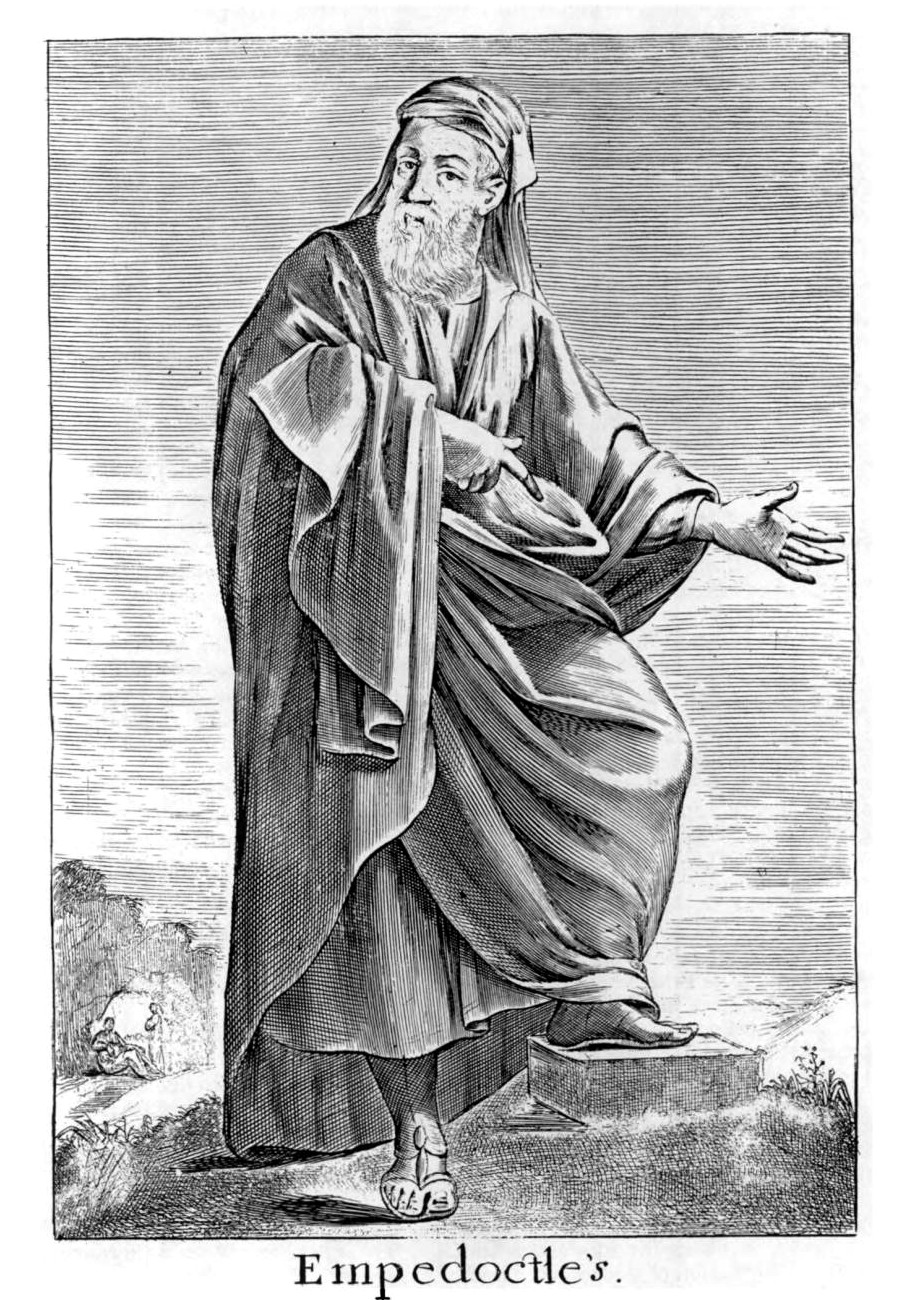
An engraving of Empedocles (c.490-c.430 BCE) as featured in the 1655 book “The History of Philosophy” (Source: Public Domain). Like the Hindu philosophers, Empedocles believed in the concept of reincarnation.
The Chaldaic Oracles, despite their fire-cult, probably owe nothing to Iran (contra: des Places, p. 13). Greek mágos, magikós, magía come from Old Persian maguš, but how to trace Iranian elements in Greek magic? The Zoroastrian pseudepigrapha were not written by Hellenized Magi, who may never have existed (R. Beck apud Boyce and Grenet, Zoroastrianism, pp. 491-565). Three kinds of medicine were distinguished, through spells, the knife, or herbs, both in Iran (Vd. 7.44) and in Greece (Pindar, 3.47-55), not elsewhere; borrowing seems, therefore, plausible, either way (Dumézil, pp. 20 ff.).
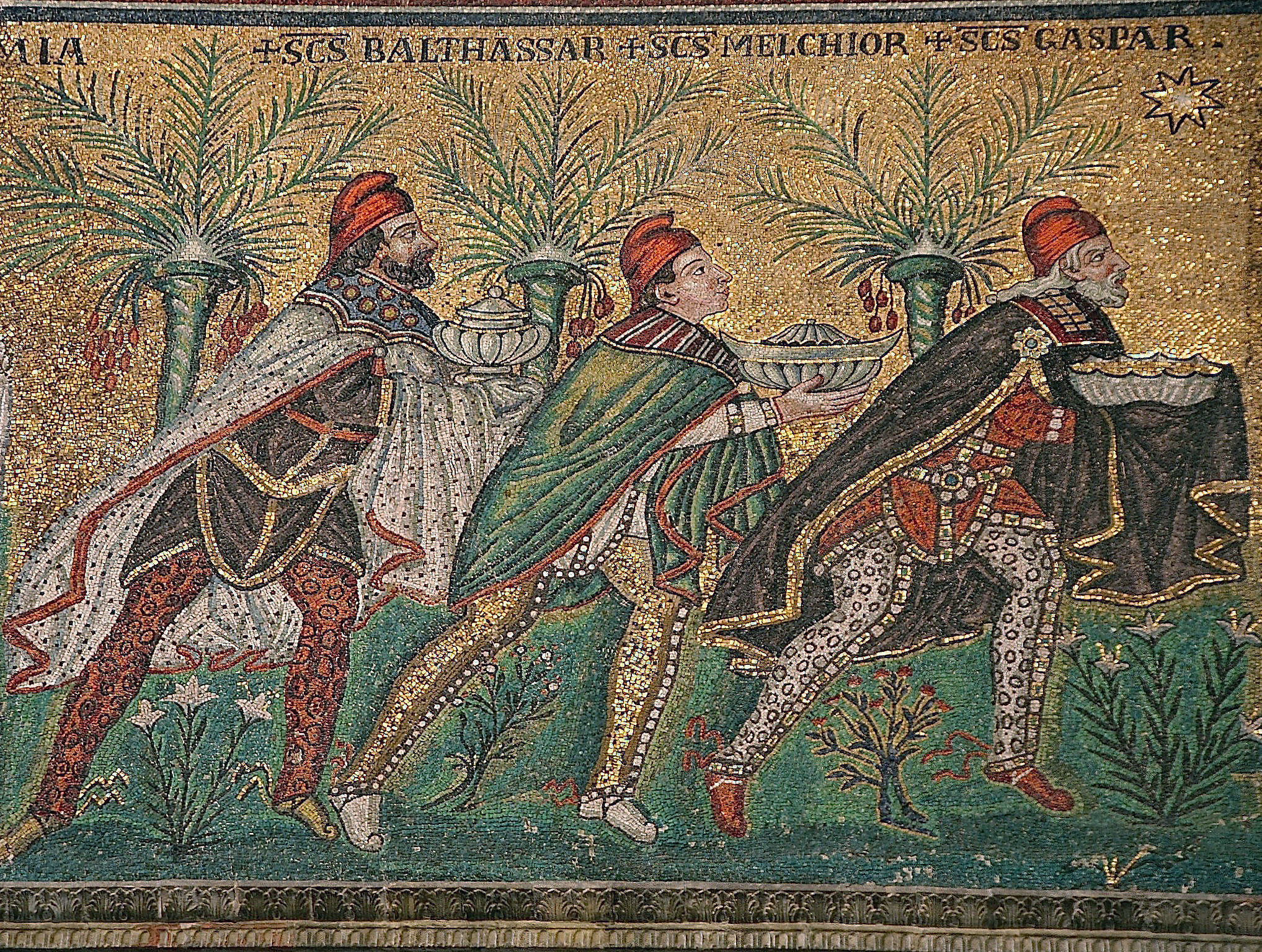
The Three Magi as depicted in Ravenna (Sant’Apollinare Nuovo), Italy (Source: Public Domain). Note the European depiction of Partho-Sassanian Iranian dress, caps and cloaks.
Bibliography:
Ruhi Muhsen Afnan, Zoroaster’s Influence on Greek Thought, New York, 1965. Joseph Bidez, Eos ou Platon et l’Orient, Brussels, 1945. Joseph Bidez and Franz Cumont, Les mages hellénisés, 2 vols., Paris, 1938; repr. 1973. M. Burkert, Iranisches bei Anaximander, Rheinisches Museum 106, 1963, pp. 97-134. Clement of Alexandria, Stromata 5.9.4. Hermann Diels, ed. and tr., Die fragmente der Vorsokratiker, 3 vols., 1922. Jacques Duchesne Guillemin, The Western Response to Zoroaster, Ratanbai Katrak Lectures for 1956, Oxford, 1958. Idem, “Persische Weisheit in griechischem Gewande?” Harvard Theological Review, April 1956, pp. 115-22. Idem, “Notes on Zervanism in the Light of Zaehner’s Zurvan, with Additional References,” Journal of Near Eastern Studies 15, April 1956, pp. 108 ff. Idem, “D’Anaximandre à Empédocle: Contacts gréco-romano,” La Per-sia e il Mondo greco-romano, Accademia Nazionale dei Lincei, Rome, 1966, pp. 423-31. George Dumézil, Le Roman des Jumeaux, Paris, 1994. Gherardo Gnoli, “Zoroastro nelle fenti classiche,” Studi Urbineti, B Sciense umani e sociali 67, 1995-96, pp. 281-95. Idem, “Zoroastro nelle nestra cultura,” ibid., 68, 1997-98, pp. 205-19. Louis Gray, Foundations of Iranian Religion, Bombay, 1929. Werner Wilhelm Jaeger, “Aristotle’s Praise of Plato,” Classical Quarterly 21, 1927, pp. 13 ff. Wilhelm J. Wolff Koster, Le mythe de Platon, de Zarathoustra et des Chaldéens, Leiden, 1951. Antonio Panaino, “Uranographia Iranica: The Three Heavens in the Zoroastrian Tradition and the Mesopotamian Background,” in Rika Gyselen, ed., Au carrefour des religions: Mélanges offerts à Philippe Gignoux, Res Orientales 7, 1995, pp. 205-26. Pindar, Pythionikai, 3.47-53. Edouard des Places, ed. and tr., Oracles chaldaïques, Paris, 1971. Martin Schwarz, “The Religion of Achaemenian Iran,” in Camb. Hist. Iran II, pp. 664-97. Henrik Willem J. Surig, De betekeris van Logosbij Herakleitos volgens de traditie en de fragmenten, Nijmegen, 1951. Martin Litchfield West, Early Greek Philosophy and the Orient, Oxford, 1971 (to which the present article owes a great deal). Robert Charles Zaehner, Zurvan. A Zoroastian Dilemma, Oxford, 1955.



